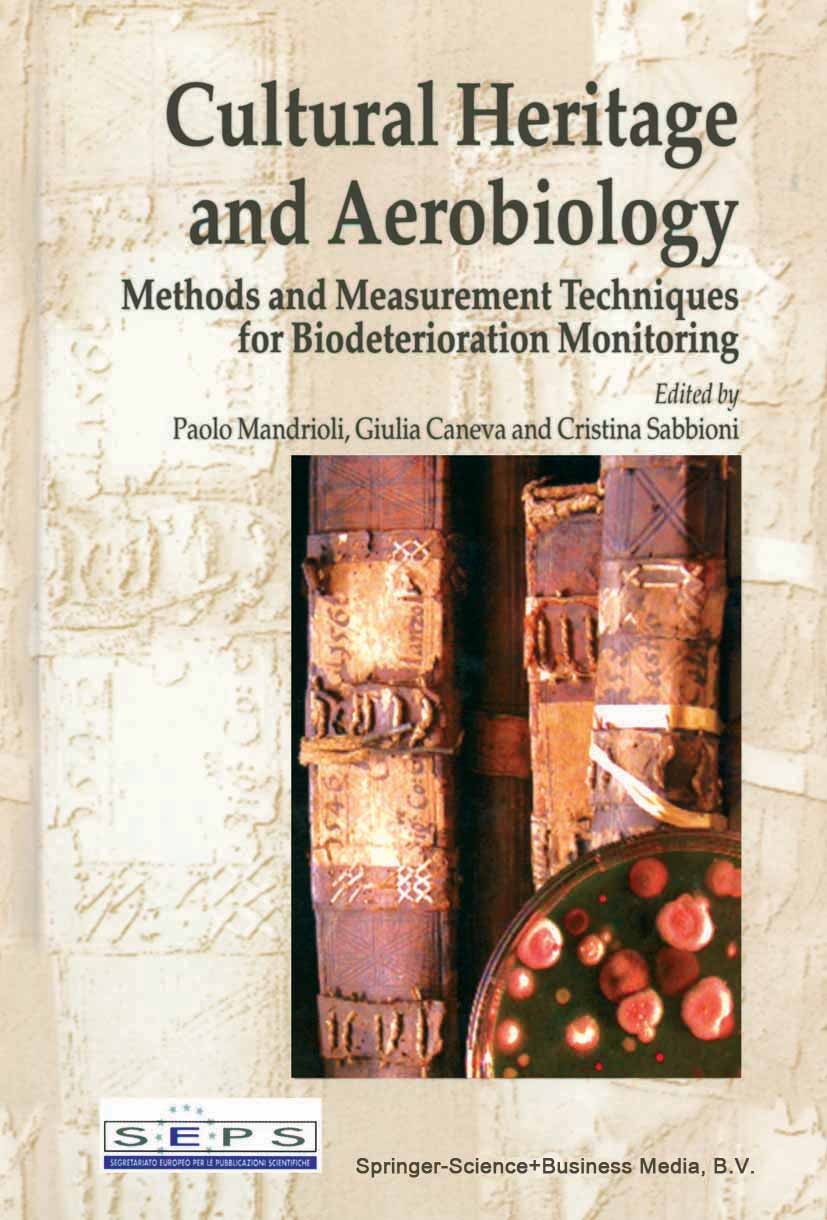| 书目名称 | Cultural Heritage and Aerobiology |
| 副标题 | Methods and Measurem |
| 编辑 | Paolo Mandrioli,Giulia Caneva,Cristina Sabbioni |
| 视频video | http://file.papertrans.cn/241/240805/240805.mp4 |
| 概述 | Includes supplementary material: |
| 图书封面 |  |
| 描述 | Aerobiology is the science that studies the biological component of the atmosphere and its effects on living systems and on the environment. This term was used for the first time in 1935, but the attention of scientists to the biological component of the atmosphere goes back to 1769, when the Italian biologist Spallanzani carried out a series of experiments that disproved the concept of spontaneous generation of life and proved the presence of viable microorganisms in the air. Aerobiology has marked characteristics of interdisciplinarity: its application fields range from respiratory diseases to the airborne outbreak of animal and vegetal diseases and to the biodegradation of substances and materials. The latter is the subject of this book. The purpose of aerobiological research applied to the conservation of cultural heritage is to evaluate the risk of alteration by airborne microorganisms of materials forming artefacts of historical, artistic and archaeological interest. Airborne spores and vegetative structures may develop on different substrates and may be a cause of degradation, in relation to the types of materials, the microclimatic situation and the pollution of the conserv |
| 出版日期 | Book 2003 |
| 关键词 | Aerosol; Cultural Heritage; Museum; development; microorganism |
| 版次 | 1 |
| doi | https://doi.org/10.1007/978-94-017-0185-3 |
| isbn_softcover | 978-90-481-6423-3 |
| isbn_ebook | 978-94-017-0185-3 |
| copyright | Springer Science+Business Media Dordrecht 2003 |
 |Archiver|手机版|小黑屋|
派博传思国际
( 京公网安备110108008328)
GMT+8, 2025-11-15 02:12
|Archiver|手机版|小黑屋|
派博传思国际
( 京公网安备110108008328)
GMT+8, 2025-11-15 02:12


